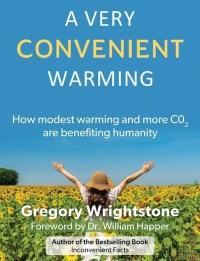 Carbon dioxide (CO2) is the principal gas that trees and other plants need to survive, just like oxygen (O2) is the principal gas that humans and other animals require. Trees absorb CO2 and release O2– animals inhale O2 and exhale CO2. See how nice this all works!
Carbon dioxide (CO2) is the principal gas that trees and other plants need to survive, just like oxygen (O2) is the principal gas that humans and other animals require. Trees absorb CO2 and release O2– animals inhale O2 and exhale CO2. See how nice this all works!
Earth’s first, primitive forests made their prolific debut 300 million years ago during the Carboniferous Period . Before then, the atmosphere held far more CO2 but concentrations declined throughout the Carboniferous Period as plants flourished.
During the Carboniferous Period the atmosphere became greatly depleted of CO2 (declining from about 2500 ppm to 350 ppm) so that by the end of the Carboniferous the CO2-impoverished atmosphere was less favorable to plant life and plant growth slowed dramatically. Today, CO2 concentrations are barely at 380 ppm (0.038% of our atmosphere) and most of that comes from entirely natural sources.
Carbon dioxide (CO2) is not to be confused with its poisonous evil cousin carbon monoxide (CO), which can kill humans and animals in just a few minutes. Life as we know it could not exist without carbon dioxide in our atmosphere.
Did you know …
 Carbon dioxide is invisible. The puffs of clouds you see from coal-fired power plants are just that– clouds. Powerplants use steam to drive the turbines which generate electricity. Steam must be cooled and condensed to water to reuse it to make more steam.
Carbon dioxide is invisible. The puffs of clouds you see from coal-fired power plants are just that– clouds. Powerplants use steam to drive the turbines which generate electricity. Steam must be cooled and condensed to water to reuse it to make more steam.
The fat, curvy towers that look like they are belching white smoke are really only emitting pure water vapor. They are in effect making clouds.
The actual exhaust emissions come from the smokestack, which is the tall skinny tower. Because modern technology makes it possible to remove much of the fly ash and sulfur before releasing smokestack gases to the air, smokestack emissons today are often almost invisible.





